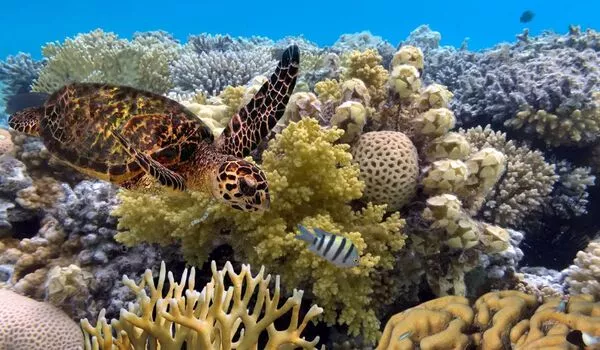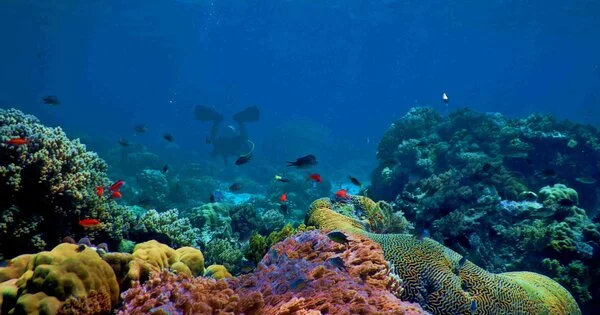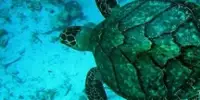There is no one-size-fits-all answer to this question, as the health and longevity of coral reefs in the Eastern Pacific will depend on a variety of factors, including climate change, ocean acidification, pollution, overfishing, and other human activities.
That being said, it is possible that some coral reefs in the Eastern Pacific could survive into the 2060s, particularly if significant efforts are made to reduce human impacts on these ecosystems. For example, the implementation of sustainable fishing practices, reduction of greenhouse gas emissions, and efforts to control pollution and other environmental stressors could help to improve the health and resilience of coral reefs in the region.
Scientists discovered that by shifting the symbiotic algae that live on coral reefs in the tropical Pacific Ocean, some reefs could maintain high coral cover into the second half of this century. The findings provide a ray of hope in an otherwise bleak picture of the future of coral reefs around the world.
Scientists at the University of Miami Rosenstiel School of Marine, Atmospheric, and Earth Science discovered that by rearranging the symbiotic algae that live on coral reefs in the tropical Pacific Ocean, coral cover could be maintained into the second half of the century. The findings provide a ray of hope in an otherwise bleak picture of the future of coral reefs around the world.
Our findings suggest that some reefs in the eastern tropical Pacific, which includes the Pacific coasts of Panama, Costa Rica, Mexico, and Colombia, may be able to maintain high coral cover into the 2060s.
Ana Palacio-Castro
While global warming is causing the loss of coral reefs globally, scientists believe that some corals are increasing their tolerance to heat by changing the symbiotic algae communities they host, which through photosynthesis provide them with the energy they need to live.
“Our findings suggest that some reefs in the eastern tropical Pacific, which includes the Pacific coasts of Panama, Costa Rica, Mexico, and Colombia, may be able to maintain high coral cover into the 2060s,” said lead author and Rosenstiel School alumna Ana Palacio-Castro, who is also a postdoctoral associate at the school’s Cooperative Institute for Marine and Atmospheric Studies. “However, while this may appear to be good news for these reefs, their survival may not be extended beyond that date unless we reduce global greenhouse gas emissions and slow global warming on a larger scale.”
Shallow coral reefs in the eastern tropical Pacific Ocean are predominantly built by branching corals in the genus Pocillopora, which are extremely important for the reefs in the region. The microscopic algae they host in their tissue harvest light to help the coral produce energy to grow. The loss of these symbiotic algae causes the coral to turn white, or bleach, and the coral struggles to meet their energy needs, which can often prove fatal.

To better understand how corals improved their tolerance to heat stress, the researchers examined over 40 years’ worth of coral reef-monitoring data from Panama, one of the longest datasets of its kind in the world. They analyzed temperature, coral cover, bleaching, and mortality data spanning three ocean heatwaves – in 1982-1983, 1997-1998, and 2015-2016 – along with data on algal symbiont community data during the last two.
The 1982-83 heatwave significantly reduced coral cover on the reef, but the effects of the 1997-98 and 2015-16 El Nio were milder, especially for corals in the genus Pocillopora, also known as cauliflower coral, which is the dominant reef-building coral in the eastern tropical Pacific. They also confirmed that during intense ocean heatwaves, the heat-tolerant alga Durusdinium glynnii becomes more common in this lineage of corals, allowing them to better withstand periods of high temperatures.
When combined with climate projections of future heat stress, it was discovered that reefs predominantly composed of Pocillopora corals and hosting this heat-tolerant alga were better equipped to survive and maintain high levels of coral cover well into the second half of the current century, indicating that some reef systems may be more resilient to warming than previously thought.
“This study shows that there are some unusual reefs that may be able to survive for several decades as a result of their ability to shuffle symbionts,” said Andrew Baker, senior author of the study and professor of marine biology and ecology at the Rosenstiel School.
“While we do not believe that most reefs will be able to survive in this manner, it does suggest that remnants of our current reefs may survive for much longer than previously thought, albeit with far fewer species. Coral reefs are extremely valuable natural resources that provide coastal protection, fisheries benefits, and economic support to many local communities. By protecting them, we can still make a difference.”
















